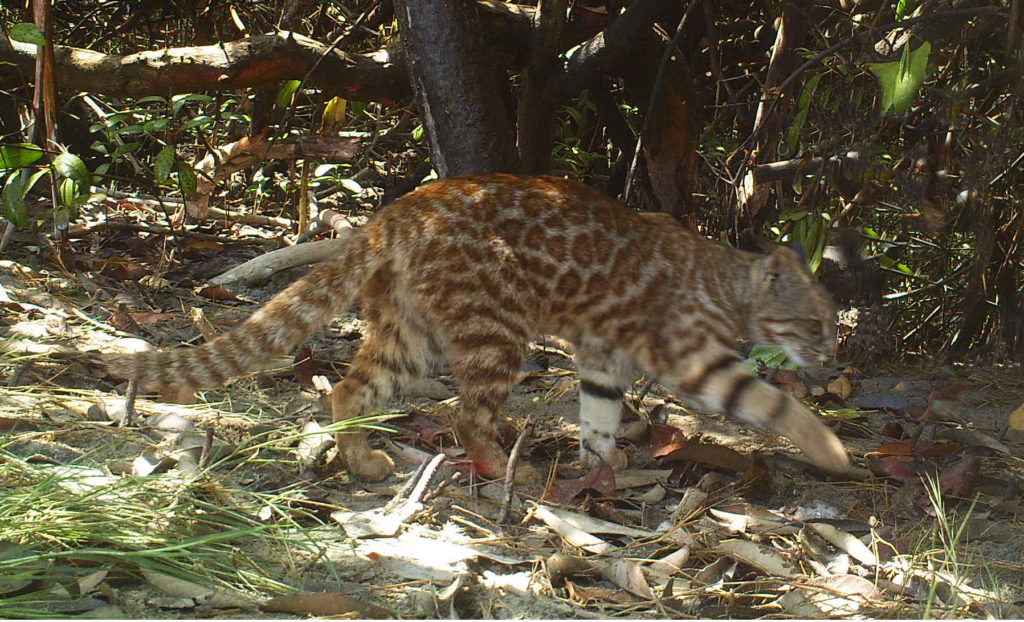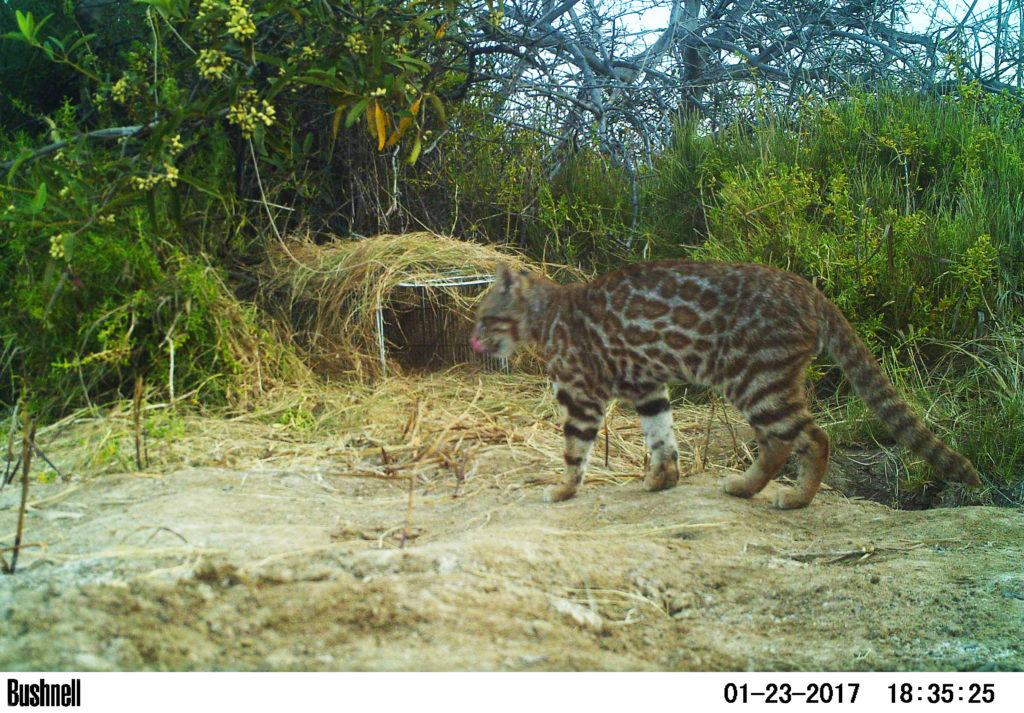Where are the cats?
Pampas cats Leopardus colocola occur in a variety of habitats from northern Ecuador to southern Argentina, yet this wide-ranging species has been poorly studied. While the population is thought to be large and healthy, there is no data to confirm this. Most of its ecological research has focused in the Andes and Cerrado, almost entirely excluding its desert and dry forest populations.
Starting in 2015, researchers Cindy Hurtado and Alvaro García Olaechea have conducted a Pampas cat research and conservation project in northern Peru. Ecology and Conservation of Pampas Cat in Northwestern Peru has three main components:
- Determine the home range, movement patterns, and habitat use of Pampas cats in the Sechura Desert
- Analyze the influence of free-ranging dogs in the activity patterns and abundance of Pampas cats in the tropical dry forest of north-western Peru
-
Conduct environmental education workshops in the Sechura Desert and tropical dry forest
Results to date
Using 32 camera traps and compiling confirmed and unpublished records, they mapped the species’ distribution and identified 12 new localities, three in the Sechura Desert and nine in the dry forest. They also radio-collared one adult female.
They identified several threats to the Pampas cat. In the Sechura Desert the cat lives among feral mammals (dogs, cats, donkeys, goats and pigs), which can be direct competitors, and may serve as vectors for disease transmission.
Habitat loss in San Pedro de Vice Mangrove is driven by wildfires set deliberately and repeatedly by local people to facilitate hunting of feral pigs. Habitat degradation in Cerros de Amotape National Park and La Ceiba Natural Reserve is caused by free-ranging livestock (cattle and goats).
Most local people (76.8%) are not familiar with the Pampas cat, and conflict with the species appears to be rare in the surveyed localities. The interviewees who had a negative perception of this cat mentioned that it preys on poultry and young goats, although there is no evidence of this.
Public awareness talks about the importance of the Pampas cat and its environment have been ongoing since the start of the project. They give talks to schoolchildren, environmental officers, and the general public.
Next steps
The researchers are currently working on the data analysis of the radio-collared Pampas cat. They have two years of data from one female, and are working on her home range, habitat use, and activity patterns.
They will also be evaluating the influence of free-ranging dogs on the behaviour patterns of the cat and other wildlife. Feral dogs are an increasing threat to wild cats in many countries.
Radio-collaring more cats in the study area
You Can Help
100% of donations will go directly to the Pampas Cat Project in Peru
Like all small wild cat projects, the Pampas cat researchers are in need of funding to continue their work. They are planning capture sessions in early 2020 but are lacking money to pay for the fieldwork.
Wildlife all over the world is disappearing rapidly, including the small wild cats. Please give generously to protect these innocent little cats before they disappear from their homes in Peru.
Click the button to go to our fully secure Canada Helps donation site, and choose Pampas Cats of Peru from the dropdown menu.



